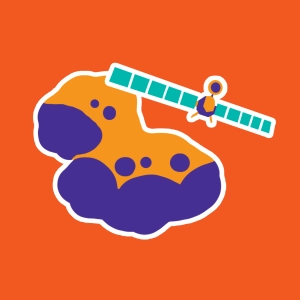 Rosetta Mission
Rosetta Mission
Can you pilot Rosetta?
After 10 years of travel, the Rosetta probe approaches the comet 67P Churyumov-Gerasimenko.
Before launching the Philae lander, the probe must place itself in orbit around the comet. This cosmic meeting takes place at high speed since the comet is moving more than 15 km/s.
To enter into orbit around the comet, Rosetta must brake and adjust her speed to get captured by the very weak gravitational field of the comet.
The orbital speed of Rosetta around 67P Churyumov-Gerasimenko is very slow: barely a few centimeters per second when compared to the comet. If Rosetta goes to fast, she will escape the gravity of 67P. If Rosetta goes too slowly, she will crash on the comet.
Can you place Rosetta on a circular orbit of 20 km or 10 km around 67P Churyumov-Gerasimenko?
To do so, you must adjust the speed of the probe using its two boosters. The first (+ button) accelerates the probe by ejecting a mass backwards. The second (- button) decelerates the probe by ejecting a mass forwards. The orbital speed should be 0.18 m/s for a 20 km orbit or 0.24 m/s for a 10 km orbit.
Note:
- The simulation has been accelerated. 4 seconds of simulation corresponds to 24h in real time.
- The mass available for the boosters is limited (the probe leaves with 1700kg of propellant of 2900kg total mass). ESA engineers must succeed on their first attempt with a minimum of thrusts per maneuver.
- The procedure of entering into orbit is sent in advance to Rosetta's computers which execute it automatically. It is actually impossible on Earth to pilot the probe in real time since the radio waves take more than 30 minutes to reach Rosetta located more than 600 million kilometers from the Earth.
Visit the Rosetta Projet page.
